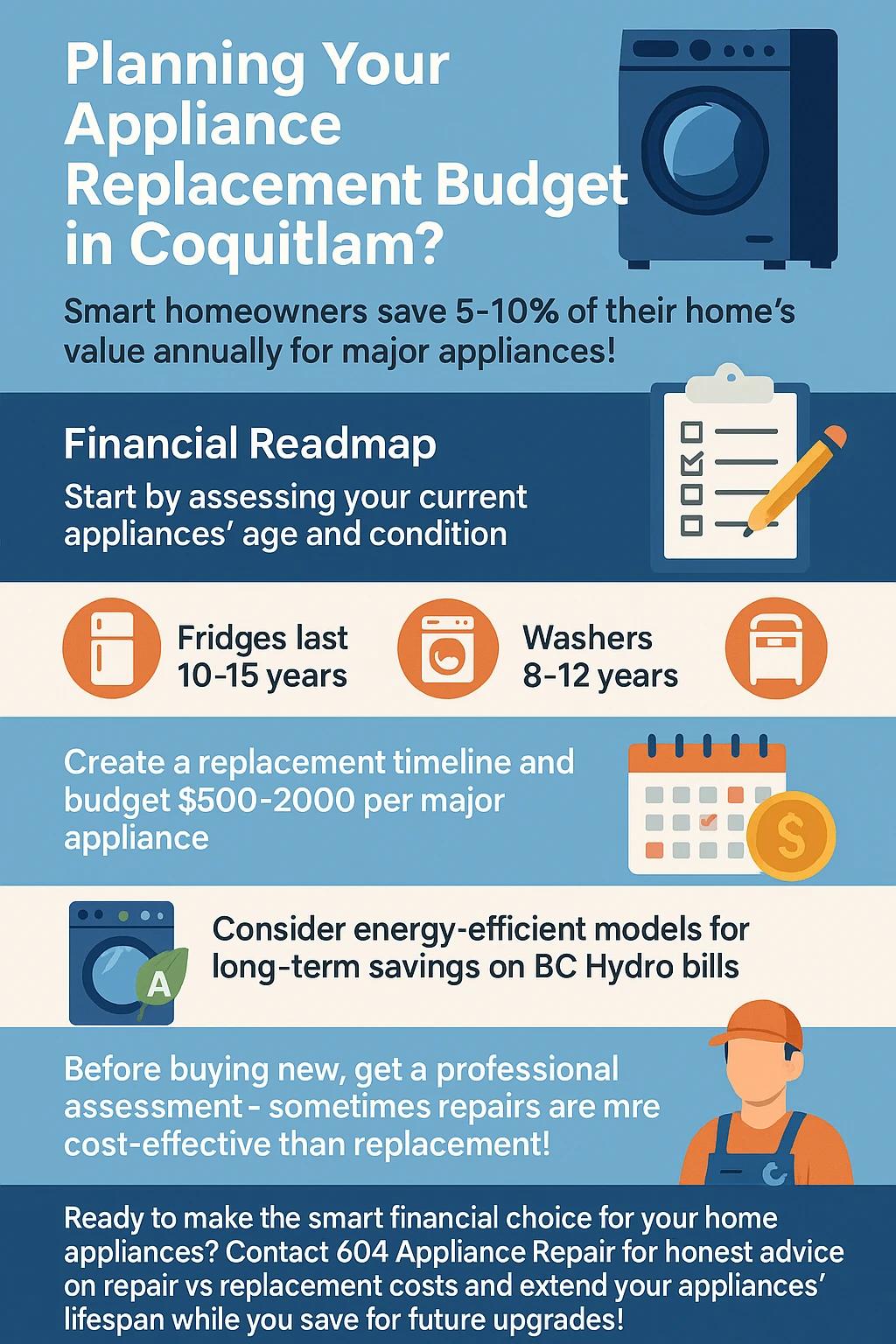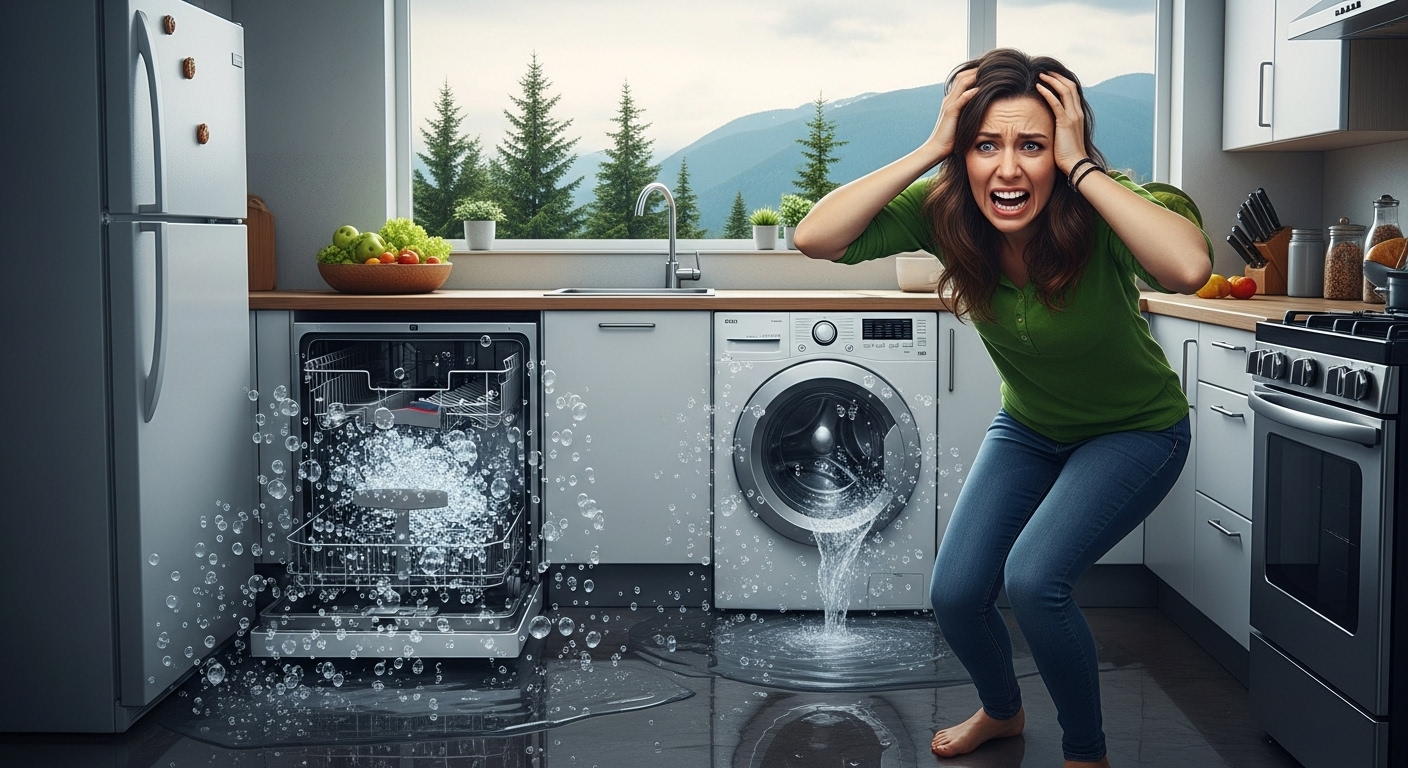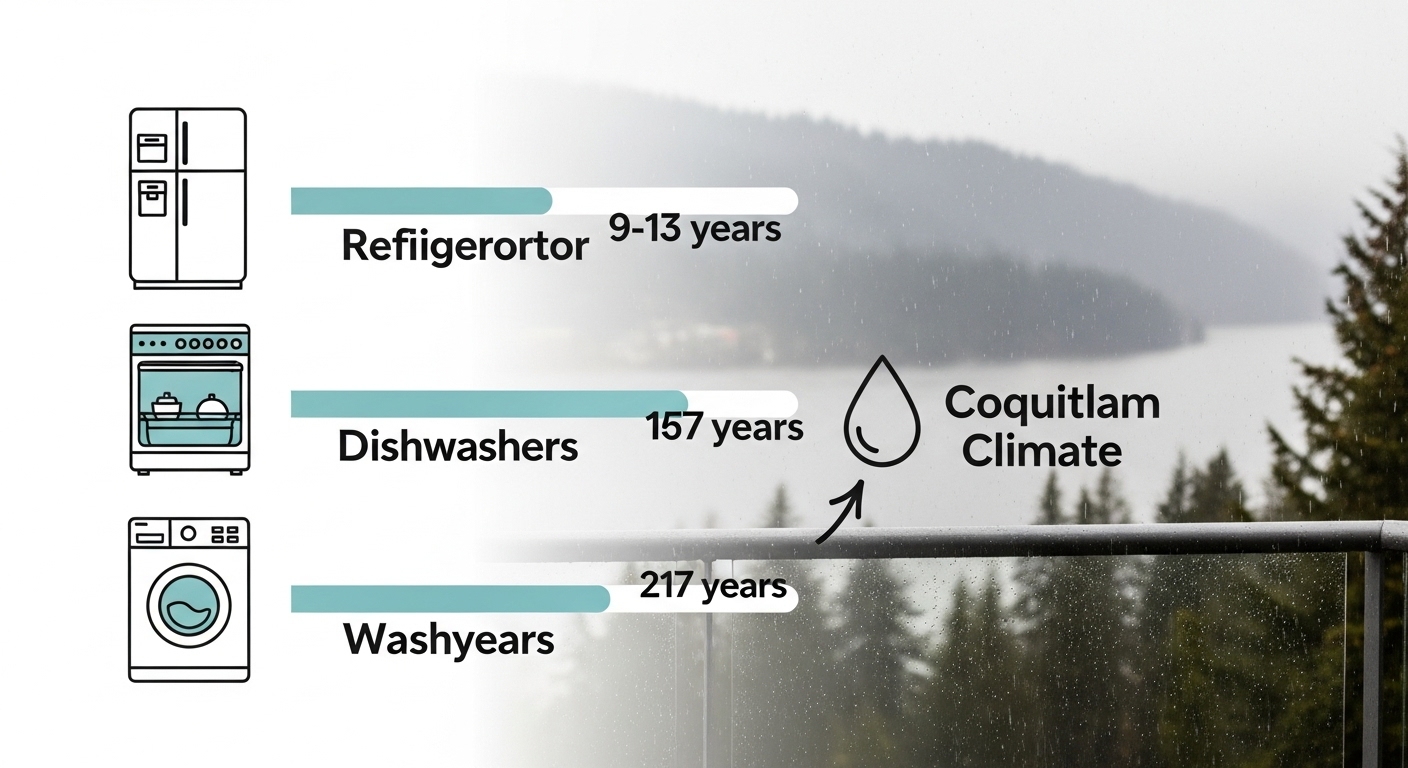Tired of appliance breakdowns hitting your wallet like a surprise hockey puck to the face? Let’s dive into the smart strategies that’ll help you budget for major home appliance purchases in Coquitlam, so you can replace that ancient fridge before it decides to quit on the hottest day of summer! [IMAGE PLACEHOLDER FOR IMAGE1]
Picture this: it’s a typical Tuesday morning in Coquitlam, and you’re rushing to get the kids ready for school when suddenly your dishwasher starts making sounds like a dying whale. Your washing machine has been wobbling like it’s doing the cha-cha, and that refrigerator from 2010 is working overtime just to keep your milk from turning into cheese. Sound familiar? You’re definitely not alone in this appliance anxiety spiral.
Here’s the thing about appliances – they’re basically the unsung heroes of our homes until they’re not. Then suddenly, you’re faced with emergency repair bills that make your credit card weep, or worse, you’re dropping serious cash on a replacement when you least expect it. But what if I told you there’s a better way? What if you could actually plan for these inevitable replacements and maybe even save some money in the process?
Living in Coquitlam comes with its own unique challenges when it comes to home maintenance. Our beautiful Pacific Northwest climate, with its humidity and occasional salt air, can actually affect how long our appliances last. Plus, we’ve got some pretty sweet local rebates and incentives that many homeowners don’t even know about. This guide is going to walk you through everything you need to know about creating a solid appliance replacement budget that actually works for your lifestyle and your wallet.
Key Outtakes:
- Start budgeting when your appliances hit 75% of their expected lifespan to avoid emergency replacement costs and financial stress
- Take advantage of BC Hydro and FortisBC rebates worth $25-$250 for energy-efficient appliances, plus Coquitlam-specific programs offering additional $100 rebates
- Use the 50% rule for repair decisions – if repair costs exceed half the replacement value, it’s time for a new appliance
- Set up automated sinking funds saving roughly 1% of your home’s value annually for appliance maintenance and replacements
- Account for Coquitlam’s humid climate when planning – moisture-exposed appliances may need earlier replacement than national averages suggest

Understanding Your Appliance Lifespan Timeline

[IMAGE PLACEHOLDER FOR IMAGE2]
Before we dive into the budgeting nitty-gritty, let’s talk about setting realistic expectations for how long your appliances should actually last. I used to think appliances were these magical boxes that would just keep chugging along forever if I was nice to them, but boy was I wrong! The reality is that every appliance has a pretty predictable lifespan, and understanding these timelines is crucial for smart financial planning.
Most refrigerators will serve you faithfully for about 9-13 years, depending on the brand and how much you’re opening and closing that door (looking at you, midnight snack enthusiasts). Dishwashers typically tap out around the 9-year mark, while your trusty dryer might make it to 13 years if you’re lucky. Washing machines are a bit more variable, lasting anywhere from 5-15 years depending on usage and whether you’re washing hockey gear every other day.
Here’s where living in Coquitlam gets interesting – our climate can actually impact these timelines. The humidity levels we experience, especially if you’re closer to the Fraser River or dealing with that Pacific moisture, can be tougher on appliances than the manufacturer’s estimates account for. I’ve seen front-loading washers develop seal issues earlier than expected because of our damp conditions, and dryers working overtime to combat the moisture in the air.
When it comes to replacement costs in our area, you’re looking at a pretty wide range depending on your needs and preferences. Basic appliances start around $400-$500 for something like a simple dishwasher, but if you want the bells and whistles (or you’re dealing with a larger family), you could easily be looking at $1,500-$5,000 for a high-end refrigerator. The key is knowing these numbers ahead of time so you can plan accordingly.
One strategy that’s worked really well for me and my clients is what I call the “75% rule.” Once an appliance hits 75% of its expected lifespan, that’s when you start actively budgeting for its replacement. So if you’ve got a 10-year-old refrigerator with a 13-year expected lifespan, it’s time to start setting money aside. This gives you a buffer to shop for deals, research the best models, and avoid the panic-buying that happens when something dies unexpectedly. You can learn more about appliance longevity factors to better understand what affects these timelines.
Making Smart Repair vs. Replace Decisions

[IMAGE PLACEHOLDER FOR IMAGE3]
Now that you understand the lifespan game, let’s talk about one of the most stressful decisions every homeowner faces: should you repair that limping appliance or just bite the bullet and replace it? This decision can literally save you thousands if you approach it strategically, but it can also drain your bank account if you make the wrong call at the wrong time.
The golden rule I always share with clients is the 50% rule – if the repair cost is more than 50% of what you’d pay for a replacement, then it’s time to start shopping for something new. But here’s where it gets tricky in Coquitlam: repair costs can vary wildly depending on which service you choose and parts availability. I’ve seen simple fixes range from $150-$300, while major repairs like compressor replacements can hit $500-$800.
Let me give you a real example from last month. A friend of mine had a 12-year-old dishwasher that stopped draining properly. The repair quote came in at $400 for a new pump and labor, while a decent replacement dishwasher would run about $900. Using the 50% rule, since $400 is less than half of $900, the repair made financial sense. But here’s the kicker – that same dishwasher had already needed two other repairs in the past three years, totaling another $350 in costs.
This is where you need to think beyond just the immediate numbers. Are you dealing with an appliance that’s becoming a money pit? Is it an older model that’s going to be harder to find parts for down the road? And here’s something most people don’t consider – what are the energy efficiency savings of a newer model? Modern ENERGY STAR appliances can save you 20-30% on your utility bills compared to models from even just 5-7 years ago.
Speaking of energy efficiency, this is where those local rebates I mentioned earlier become super relevant. If you’re replacing an old energy-hungry appliance with a new efficient model, you might qualify for rebates that significantly reduce the net cost of replacement. BC Hydro offers rebates ranging from $25-$100 for qualifying appliances, and there are additional Coquitlam-specific programs that can add another $100 to your savings.
Don’t forget about the hidden costs of replacement either. Installation fees, disposal of your old appliance, and any necessary modifications (like updating electrical or plumbing connections) can add $100-$500 to your total cost. But here’s a pro tip: many retailers will negotiate on these fees, especially if you’re taking advantage of rebate programs. Check out resources on appliance repair costs to better understand when repairs make financial sense in your situation.
Building Your Appliance Sinking Fund Strategy

Okay, let’s talk about one of my favorite financial strategies that most homeowners have never heard of – the sinking fund. If budgeting was a superhero team, sinking funds would be the quiet, reliable member who saves the day when everyone else is panicking. Basically, it’s money you set aside specifically for predictable expenses, like appliance replacements, so you’re never caught off guard.
The beauty of a sinking fund for appliances is that it takes all the stress and panic out of those inevitable replacements. Instead of scrambling to figure out how you’re going to pay for a new washer when yours finally gives up, you’ve already got the
